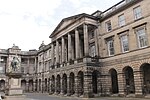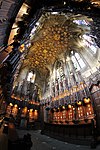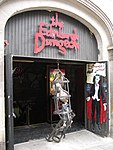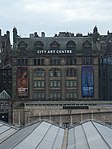Mary King's Close
Reportedly haunted locations in EdinburghReportedly haunted locations in ScotlandRoyal MileStreets in EdinburghTourist attractions in Edinburgh ... and 1 more
Use British English from April 2014

Mary King's Close is a historic close located under buildings on the Royal Mile, in the historic Old Town area of Edinburgh, Scotland. It took its name from one Mary King, a merchant burgess who resided on the Close in the 17th century. The close was partially demolished and buried due to the building of the Royal Exchange in the 18th century, and later closed to the public for many years. The area became shrouded in myths and urban legends; tales of hauntings and murders abounded.
Excerpt from the Wikipedia article Mary King's Close (License: CC BY-SA 3.0, Authors, Images).Mary King's Close
Craigs Close, City of Edinburgh Old Town
Geographical coordinates (GPS) Address Nearby Places Show on map
Geographical coordinates (GPS)
| Latitude | Longitude |
|---|---|
| N 55.950277777778 ° | E -3.1902777777778 ° |
Address
Edinburgh City Chambers
Craigs Close
EH1 1BN City of Edinburgh, Old Town
Scotland, United Kingdom
Open on Google Maps











